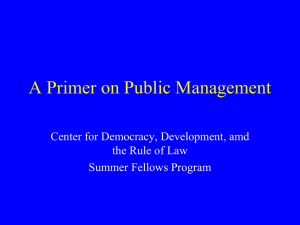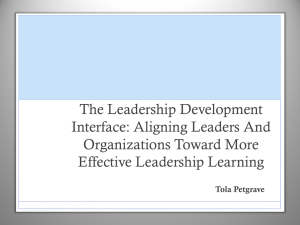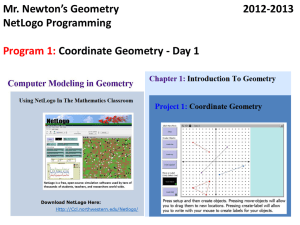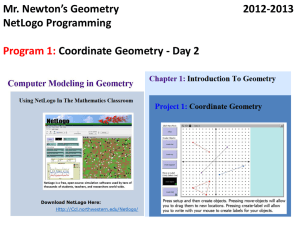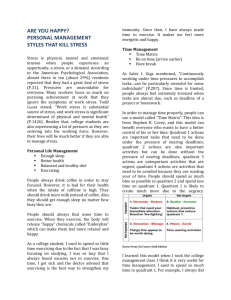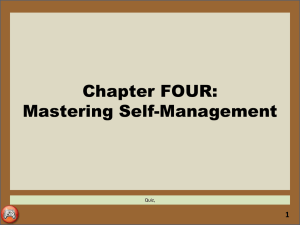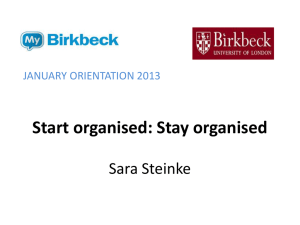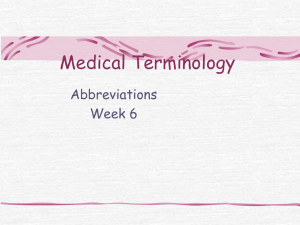The Scope of State Functions
advertisement
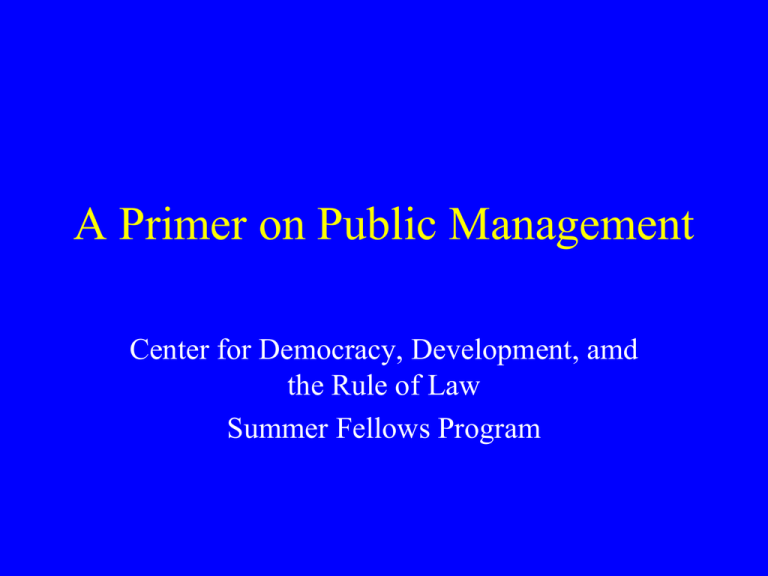
A Primer on Public Management Center for Democracy, Development, amd the Rule of Law Summer Fellows Program “It’s not the business plan but the execution” --attributed to Goldman Sachs X-axis Industrial policy Wealth redistribution Activist Functions Addressing externalities Education, environment Regulating Monopoly Overcoming imperfect information Insurance, financial regulation Social Insurance Intermediate Functions Providing pure public goods Defense, Law and order Property rights Macroeconomic management Public health Improving equity Protecting the poor Minimal Functions The Scope of State Functions Strength of State Institutions Two Dimensions of Stateness Scope of State Functions Strength of State Institutions Stateness and Efficiency Quadrant I Quadrant III Scope of State Functions Quadrant II Quadrant IV Strength of State Institutions The Stateness Matrix France United States Japan USSR Turkey Brazil Sierra Leone Afghanistan Scope of State Functions Strength of State Institutions USSR/Russia USSR 1980 Russia 2010 Russia 2000 Scope of State Functions Strength of State Institutions China China 2011 China 2005 Scope of State Functions China 1978 Strength of State Institutions New Zealand 2000 1990 Scope of State Functions 1981 Why is Public Administration So Difficult? • Central issue of all organizational theory is delegated discretion • All organizations need to delegate authority – To take advantage of local knowledge – To respond quickly • But delegation means loss of control Two Approaches to Organizational Theory • Economists’ approach – Man is homo economicus – Incentives matter – Principal-agent framework • Social capital approach – Man as social animal – Norms and bonding over incentives Principal-Agent Theory: Private Sector Shareholders Board of Directors CEO Senior Management Workers Principal-Agent Theory: Public Sector The People President Legislature Bureaucracy Implementing organizations How is the Public Sector different from the Private Sector? • Public agencies not allowed to retain earnings • Public agencies can’t reallocate factors of production • Public agencies must follow goals not of their own choosing • Public agencies not subject to market discipline Making the public sector more like the private sector • New Public Management (NPM) • Adding an exit option and competition – Vouchers, school choice • Wage decompression • Separating the policymaker from the implementer • Public expenditure tracking surveys What these innovations have in common • All can be subsumed under principal-agent framework – Use a monitoring-and-accountability framework • All try to affect agents’ incentives • All try to mimic market mechanisms • But: Do they work? Limitations of Principal-Agent • If you can’t measure, you can’t hold accountable • Multiple principals • Principals want contradictory things • Public agencies are monopoly suppliers that can’t go out of business High Public Sector Outputs Quadrant II Quadrant III Quadrant IV Low Specificity Quadrant I Low Transaction volume High Specificity High Monitorability of Public Sector Outputs Aircraft maintenance Telecoms Central banking Railroads Highway maintenance Foreign affairs Court systems Primary school teaching Low University education Low Preventative medicine Guidance counseling Transaction volume High Finally, • Human beings are not simply homo economicus • Are social animals as well • Motivated by pride, self-respect, group solidarity, other norms • Importance of social capital A Third Type of Capital Physical Capital Human Capital Social Capital 4/13/2015 21 Networks of Trust 4/13/2015 22 A Corporate Culture 4/13/2015 23 Trust networks critical to flat organization... 4/13/2015 24 And to Outsourcing CEO Design Personnel Design Manufacturing Manufacturing Marketing Final Product 4/13/2015 25 Where does social capital come from? • In traditional societies: – Kinship, shared culture, repeated interaction • In modern societies – Education, particularly professional education – Shared goals and standards – Leadership! Education Reform • Economic approaches – Vouchers, school choice – Testing and individual accountability • Social capital approaches – Raise salaries; improve professional standards • Fundamentally a political issue – Teachers’ unions, low incentives to solve issue Community-Driven Development • Program design – Designed to foster social capital – Bypasses traditional institutions – Relies on participation and bottom-up input • Problems – Expensive and highly labor intensive – Encompasses ambitious social engineering goals Conditional Cash Transfers • Transfers to poor require school attendance • Programs designed for sustainability – Goal is increased human capital – Often built-in evaluations (Progresa/Oportunidades) • Problems – Programs develop their own constituencies – Can be used in clientelistic ways
